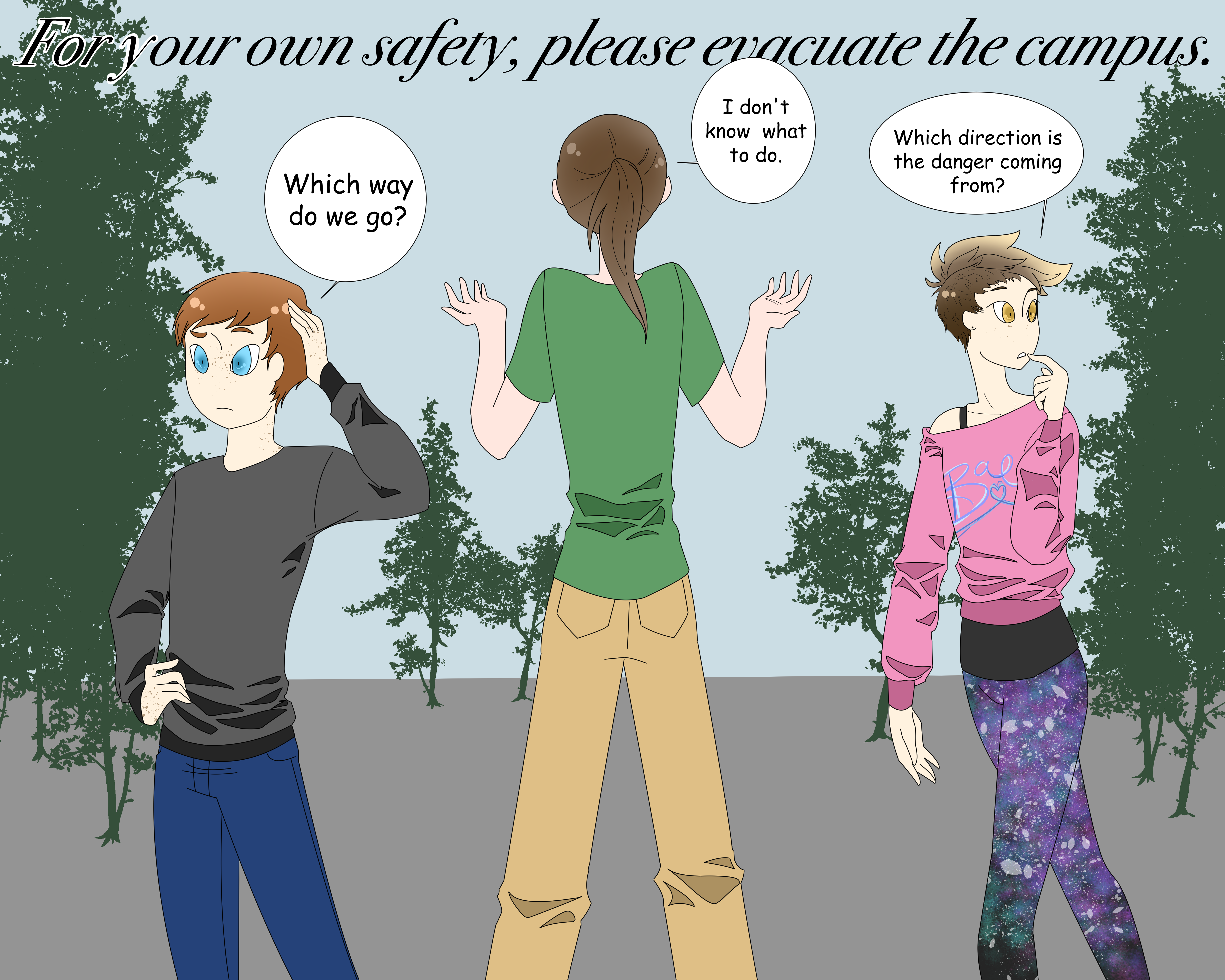
On Wednesday, March 7, Pierce students were told to leave campus following a credible threat made against the college. Knowledge of the shutdown was spread via LACCD email and sheriff’s deputies blaring the information over their loudspeakers as they rolled down the mall in their squad car.
Some students and professors learned of the college shut down from peers rather than from official information released by Pierce or the Los Angeles Community College District, which led to bemused, disorganized exoduses from some classes.
To increase safety and overall security during a campus shutdown, Pierce College should emphasize a comprehensive and thorough evacuation procedure and drill students and faculty in the steps it would involve.
Pierce’s website says that the college has “emergency procedures on evacuations, general safety, communications, and response to a major disaster.” But these procedures are not taught to students or, as made evident by the response to the credible threat on March 7, emphasized by faculty.
Pierce’s evacuation procedure, which is outlined in the Emergency Preparedness Booklet located somewhere in every class, offers directions for students to follow and includes the steps that a designated “Building Emergency Evacuation Coordinator” is meant to take to ensure that individuals on campus remain safe.
The directions in this procedure are suitably thorough, but they need to be imparted to those on campus.
Pierce should dedicate a day each semester to staging an evacuation drill, similar to the Great California Shakeout earthquake drill held every October.
This drill could cover how faculty can maintain order in their classrooms following an announcement that there is a credible threat to the campus, how faculty and students can cooperate to ensure a successful egress to a designated safe zone, and where students outside of class can safely evacuate.
Staging a drill would help familiarize students and faculty with the steps involved in the procedure and increase the likelihood that it would be carried out safely and fluidly in the event of an actual evacuation.
Communication also needs to be addressed—a simple email is an inadequate method of bringing awareness to a credible threat and campus evacuation.
To properly convey to all present on campus that an emergency has arisen and there is a necessary procedure to be followed because of it, Pierce should install an intercom system. Students and faculty need to be made aware of an emergency as it unfolds.
Knowledge is power. And the knowledge of what to do in the event of an evacuation order has the power to keep us all safe during our time at Pierce.

